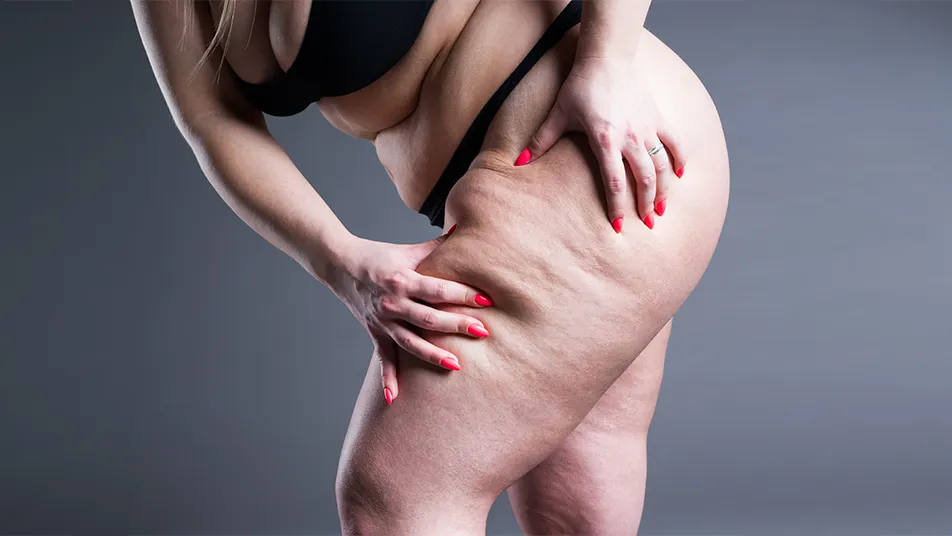Did you know that over 10 million liposuction patients in the U.S. are affected by lipedema, including those seeking intensive liposuction, modified liposuction surgery, and liposuction therapy? This condition causes abnormal fat accumulation in a lipedema patient, often leading to discomfort and self-esteem issues, but can be addressed through lipedema liposuction surgery for thorough liposuction and potential lipedema experience improvement. Liposuction for lipedema is gaining attention as an advocate potential solution. It not only reduces excess fat through lipedema reduction surgery but also alleviates pain and improves mobility for a lipedema patient with stage lipedema using lipedema liposuction surgery. Many patients report significant improvements in their quality of life after lipedema liposuction surgery for lipedema fat.
Understanding this lipo option is crucial for those struggling with lipedema. The benefits can be life-changing, offering relief from physical and emotional burdens, lipo. If you’re curious about how liposuction can help manage lipedema, this post will guide you through everything you need to know.
Key Takeaways
-
Liposuction can be an effective treatment for lipedema, helping to reduce painful fat deposits and improve mobility.
-
Evaluate your eligibility for liposuction by discussing your medical history and symptoms with a qualified healthcare provider.
-
Consider non-surgical therapies as complementary options to manage lipo lipedema symptoms alongside surgical interventions.
-
Understand the different liposuction techniques, such as tumescent and water-assisted, to determine which may be best for your needs.
-
Check with your insurance provider about coverage options for lipo lipedema surgery, as policies may vary significantly.
-
Follow proper post-operative care instructions to ensure a smooth recovery and optimal results from your liposuction procedure.
Overview of Liposuction for Lipedema
Liposuction Defined
Liposuction is a surgical procedure designed to remove excess fat from specific areas of the body. It is often considered when dealing with lipo conditions like lipedema. This condition primarily affects women and involves lipo abnormal accumulation of adipose tissue, especially in the legs and arms.
Goals of Treatment
The main goal of liposuction for lipedema patients is to eliminate this abnormal adipose tissue. Removing this excess fat through lipo can help improve mobility and reduce pain. Many female lipedema lipo patients report a significant improvement in their quality of life after surgery.
Assessment Process
Before undergoing liposuction, a thorough assessment is critical. Doctors evaluate the stage of lipo lipedema, which can range from mild to severe. This assessment helps determine the best course of action. Proper documentation of health history and physical examination results is essential for planning the procedure.
Specialized Techniques
Surgeons use specialized techniques when performing liposuction for lipedema. These techniques are different from traditional liposuction methods. They focus on preserving lymphatic vessels and minimizing trauma to surrounding tissues.
Tumescent liposuction is one common approach used for treating lipedema. This method involves injecting a solution into the fatty tissue before removal. The solution contains saline, anesthetic, and epinephrine, which helps reduce bleeding and swelling.
Another technique is ultrasound-assisted liposuction (UAL). UAL uses sound waves to break down fat cells before they are removed. This method can be particularly effective for patients with advanced stages of lipedema.
Lipedema Outcomes
Research shows that many female patients experience positive outcomes after liposuction for lipedema. Studies indicate that patients often see a reduction in limb size and improved mobility post-surgery. Pain levels may also decrease significantly after the removal of abnormal adipose tissue.
However, it’s important to note that results can vary based on individual circumstances. Factors such as the stage of lipedema and overall health play a role in recovery and results.
Post-Operative Care
After surgery, proper care is vital for optimal recovery. Patients typically need to follow specific guidelines set by their healthcare provider. These may include wearing compression garments, engaging in light physical activity, and attending follow-up appointments.
Purpose and Benefits of Liposuction
Pain Relief
Liposuction can significantly alleviate pain and discomfort associated with lipedema. Many patients experience chronic pain due to the buildup of excess fat. This condition often leads to increased pressure on joints and tissues. By removing this fat, liposuction can help reduce that pressure. As a result, many individuals report less pain after the procedure.
Patients also notice a decrease in tenderness around affected areas. This relief can improve daily activities. Tasks that once felt difficult become manageable.
Improved Mobility
The improvement in mobility is another key benefit of liposuction for lipedema patients. Excess fat can restrict movement. It may make walking or exercising challenging. After liposuction, many patients find they can move more freely.
Increased mobility often leads to a more active lifestyle. Patients may engage in physical activities they previously avoided. Regular exercise can further enhance their overall health.
Enhanced Quality of Life
Liposuction can greatly enhance quality of life for those with lipedema. Many individuals feel self-conscious about their body shape. The removal of excess fat helps create a more proportionate body shape. This change can boost self-esteem and confidence.
Patients often report feeling happier and more comfortable in social situations after surgery. They may wear clothes they previously avoided or participate in activities without fear of judgment.
Lymphatic Function
Another important aspect is the potential improvement in lymphatic function. Lipedema affects the lymphatic system, causing fluid retention and swelling. Fat removal during liposuction can help improve this function. When excess fat is removed, it reduces the burden on the lymphatic system.
This improvement can lead to decreased swelling and better circulation. Patients may notice less heaviness in their legs and other affected areas.
Body Proportions
A more proportionate body shape is a significant outcome of liposuction for lipedema patients. Many people struggle with body image issues due to uneven fat distribution. Liposuction targets specific areas, allowing for a more balanced appearance.
This change not only helps physically but also emotionally. Individuals feel more aligned with their body image after treatment.
Criteria for Liposuction Use
Medical Evaluation
A thorough medical evaluation is crucial before considering liposuction. Doctors assess the patient’s overall health and medical history. They check for any underlying conditions that could complicate the procedure. This evaluation helps ensure patient safety and optimal results.
The evaluation includes a physical examination. Physicians look for symptoms of lipedema, such as abnormal fat distribution and swelling. They also review previous treatments and their effectiveness. This process helps determine if liposuction is appropriate.
Conservative Treatments
Doctors prefer conservative treatments before recommending liposuction. These can include compression therapy, exercise, and dietary changes. Such methods aim to improve symptoms and mobility without surgery. Patients often experience some relief from these options.
If conservative treatments do not yield satisfactory results, doctors may consider surgery. However, this decision should not be taken lightly. The goal remains to minimize risks while providing effective care.

Suitable Candidates
Not all patients with lipedema qualify for liposuction. Ideal candidates typically have early-stage lipedema without secondary complications. Those with significant skin elasticity or who are not overweight may also be considered.
Patients must demonstrate a clear understanding of the procedure’s risks and benefits. They should have realistic expectations about the outcomes. Successful results depend on both patient selection and surgical technique.
Procedure Details
During the procedure, surgeons use a cannula to remove excess fat. This device allows for precise fat removal while minimizing trauma to surrounding tissues. Surgeons often perform liposuction under local anesthesia or sedation.
Post-surgery, patients may experience swelling and discomfort. Recovery time varies based on individual factors and extent of the procedure. Regular follow-ups help monitor recovery and assess improvements in symptoms.
Expected Results
Patients often seek liposuction for significant improvement in their condition. Many report enhanced mobility and reduced pain following the procedure. The success of liposuction can lead to better quality of life.
However, results vary among individuals. Some may require additional procedures for optimal outcomes. Understanding these factors is essential for making informed decisions about treatment options.
Non-Surgical Therapies for Lipedema
Multidisciplinary Approach
Healthcare professionals play a crucial role in managing lipedema. A multidisciplinary approach includes doctors, occupational therapists, and dietitians. Each expert contributes unique skills to help patients. Doctors assess the condition and suggest treatments. Occupational therapists provide guidance on daily activities. Dietitians create meal plans that support health and weight management.
This teamwork ensures comprehensive care for individuals with lipedema. Each professional’s input can improve patient outcomes.
Conservative Treatments
Several lipedema therapies focus on conservative methods. Compression therapy is one of the most common treatments. It uses specialized garments to reduce swelling and improve circulation. Wearing compression garments regularly can help manage symptoms effectively.
Manual lymph drainage is another effective method. This gentle massage technique encourages lymph fluid movement. It reduces swelling and discomfort in affected areas. Patients often see improvements with consistent treatment.
Diet also plays a significant role in managing lipedema. A balanced diet can help control weight and reduce inflammation. Foods rich in antioxidants may be particularly beneficial. Maintaining a healthy lifestyle supports overall well-being.
Limitations of Non-Surgical Methods
Despite their benefits, non-surgical treatments have limitations. These methods may not fully address the underlying issues of untreated lipedema. Patients might experience ongoing pain or discomfort even with therapy.
Conservative measures often require ongoing commitment from patients. They may need to adjust their lifestyles significantly to see results. This commitment can be challenging for some individuals.
Many find that while these treatments provide relief, they do not eliminate the condition. Surgical options, such as liposuction, might still be necessary for more advanced cases.
Lipedema Liposuction Techniques
Tumescent Method
Tumescent liposuction is a common technique for treating lipedema. This method involves injecting a large volume of a saline solution mixed with anesthetic into the fatty tissue. The fluid helps to numb the area and reduce bleeding during surgery. This approach allows for a gentler removal of fat, leading to quicker recovery times.
Surgeons often prefer this method because it minimizes trauma to surrounding tissues. Patients typically experience less pain and swelling post-surgery. Results from tumescent liposuction can be significant in reducing the symptoms of lipedema.
Water-Assisted Technique
Water-assisted liposuction is another effective option. This newer technique uses a stream of water to help dislodge fat cells. The water gently loosens the fat, making it easier for the surgeon to remove it. This method is less invasive compared to traditional methods.
Surgeons find that water-assisted techniques can lead to smoother results. Patients report feeling more comfortable during the procedure. This technique also helps preserve lymphatic structures, which are crucial for maintaining proper fluid balance in the body.
Importance of Lymphatic Preservation
During lipedema liposuction surgery, preserving lymphatic structures is critical. These structures play a key role in the body’s immune system and fluid regulation. Damage to lymphatics can lead to complications such as lymphedema.
Surgeons must carefully navigate around these areas during procedures. By sparing lymphatic vessels, patients can avoid long-term issues after surgery. Successful outcomes depend on this careful attention to detail.
Role of Surgeon Expertise
The expertise of the surgeon significantly impacts the success of lipedema reduction surgery. Skilled surgeons understand the unique challenges presented by lipedema. They have experience with various liposuction methods tailored specifically for this condition.
Surgeons familiar with both traditional and modern techniques can offer better results. They can assess each patient’s needs and choose the best approach accordingly. A well-executed procedure can lead to improved quality of life for those suffering from lipedema.
Patients should seek out surgeons who specialize in lipedema surgeries. Researching credentials and previous patient outcomes can provide valuable insights. A knowledgeable surgeon can guide patients through their options and set realistic expectations.
Tumescent vs. Water-Assisted Liposuction
Tumescent Liposuction
Tumescent liposuction uses large volumes of a saline solution mixed with anesthesia. This mixture is injected into the targeted tissue before the procedure. The tumescent solution causes swelling, which helps separate fat cells from surrounding connective tissue. This separation makes it easier to remove fat during the liposuction process.
The anesthesia in this method reduces pain and bleeding. It allows patients to undergo the procedure with minimal discomfort. Recovery time can vary, but many patients return home the same day. They may experience some swelling and bruising, but these symptoms usually resolve within a few weeks.
Water-Assisted Liposuction
Water-assisted liposuction takes a different approach. This technique involves using a gentle stream of water to dislodge fat cells. The water creates minimal swelling compared to tumescent liposuction. This means less trauma to the surrounding tissue.
With this method, surgeons can achieve precise results. The use of water minimizes bleeding and reduces recovery time. Patients often report less pain after the procedure. Many feel comfortable returning to their daily activities faster than with tumescent liposuction.
Advantages of Each Technique
Both techniques have their benefits and considerations.
-
Tumescent Liposuction:
-
Effective for larger areas.
-
Reduces bleeding significantly.
-
Provides local anesthesia.
-
-
Water-Assisted Liposuction:
-
Less trauma to tissues.
-
Quicker recovery time.
-
Lower risk of complications.
-
Choosing between these methods depends on individual needs and goals. Surgeons consider factors like the area being treated and patient health when recommending a technique.
Considerations for Patients
Patients should understand both methods before making a decision. Tumescent liposuction may involve longer recovery times due to more swelling and bruising. However, it can be more effective for larger fat deposits.
Water-assisted liposuction offers quicker recovery but may not be suitable for all cases. Some patients might need more extensive work that only tumescent methods can provide.
Choosing Lymph Sparing Liposuction
Protecting Lymphatics
Surgeons must prioritize the lymphatic system during liposuction for lipedema. This condition affects the lymphatics, leading to swelling and discomfort. Traditional liposuction techniques can damage these vital structures. Damage may cause lasting complications, including further swelling and pain.
Lymph-sparing liposuction aims to protect these channels. It preserves lymphatic flow while removing excess fat. Surgeons use special techniques to identify and avoid lymphatic vessels. This careful approach minimizes risks and enhances recovery.
Experienced Surgeons
Choosing a surgeon with experience in lymph-sparing techniques is crucial. Skilled surgeons understand the anatomy of the lymphatic system. They have the training to perform complex procedures safely. Their expertise leads to better outcomes for patients.
Patients should seek out board-certified plastic surgeons who specialize in lipedema treatment. These professionals often have advanced training in lymphatic preservation. They can provide personalized care tailored to individual needs.
Long-Term Importance
Maintaining lymphatic function after surgery is vital for quality of life. Proper lymph flow helps prevent complications like lymphedema. Patients must follow post-operative care guidelines provided by their surgeon.
Engaging in gentle activities can also support lymphatic health. Simple movements encourage circulation and fluid drainage. Staying hydrated is essential as well. Proper hydration aids in maintaining overall health.
Regular follow-ups with the surgeon can help monitor recovery. These check-ups allow for early detection of any issues related to lymphatic function.
Insurance Coverage for Lipedema Surgery
Coverage Variability
Insurance coverage for lipedema surgery varies widely among insurance providers. Some medical insurance companies recognize lipedema as a legitimate medical condition. They may cover lymph sparing liposuction. Others, however, classify it as cosmetic surgery, leading to denial of coverage. This inconsistency can create confusion for patients seeking treatment.
Documentation plays a critical role in determining coverage. Patients should gather medical records that support their diagnosis. These records may include physician notes and imaging studies. Having strong documentation can help persuade insurance companies to approve claims.
Check with Providers
Patients should always check with their health insurance providers about specific coverage details. Each insurance company has its own medical policies regarding treatments for lipedema. Some may require pre-authorization before surgery. Others might have specific criteria that must be met for coverage approval.
Contacting the insurance company directly is essential. Patients should ask about the requirements for lipedema surgery. They might need to provide proof of previous conservative treatments. This could include physical therapy or compression garments. Understanding these details can save time and reduce stress later in the process.
Alternative Financing Options
If insurance does not cover the procedure, patients can explore alternative financing options. Many clinics offer payment plans tailored to individual needs. These plans can make procedures more affordable over time.
e patients might consider medical loans specifically designed for surgical procedures. These loans often have lower interest rates than personal loans, making them a viable option for many individuals.
Crowdfunding platforms have gained popularity in recent years. Patients can share their stories online and seek financial assistance from friends, family, and even strangers who want to help.
Post-Liposuction Recovery and Care
Recovery Timeline
Recovery from outpatient liposuction varies for each patient. Most people notice significant swelling for the first few weeks. Generally, initial recovery takes about one to two weeks. Patients can usually return to light activities after this period. Full recovery may take several months, depending on individual health and the extent of the procedure.
Factors that affect recovery times include age, overall health, and the amount of fat removed. The more extensive the surgery, the longer the recovery may take. Patients should closely follow their doctor’s advice during this time.
Aftercare Guidelines
Proper care after liposuction is crucial for a successful outcome. Compression garments are essential. Wearing them helps reduce swelling and supports healing. Doctors often recommend wearing these garments for several weeks post-surgery.
Follow-up visits with the doctor are vital. These appointments allow for monitoring of healing and addressing any concerns. Patients should not skip these visits to ensure they recover effectively.
Rest is also important during recovery. Engaging in strenuous activities too soon can lead to complications. Patients must listen to their bodies and prioritize healing.
Ongoing Maintenance
Ongoing maintenance is necessary to prevent recurrence of symptoms associated with lipedema. Regular exercise can help maintain results from liposuction. Low-impact activities, like swimming or walking, are recommended.
A balanced diet plays a significant role as well. Eating nutritious foods supports overall health and aids in weight management. Staying hydrated is also important in maintaining skin elasticity and reducing swelling.
Patients should work closely with a patient advocate or healthcare provider to develop a long-term care plan. This plan may include regular check-ups and lifestyle adjustments tailored to individual needs.
Complications can arise if proper care is not taken. Some patients experience persistent swelling or discomfort after surgery. Addressing these issues promptly with a doctor can prevent further complications.
Observações Finais
Liposuction for lipedema can be a game-changer for many. You’ve learned about its benefits, techniques, and the importance of choosing the right method. Understanding your options empowers you to make informed decisions about your health.
Recovery is just as crucial as the procedure itself. Follow your care plan closely to maximize results. If you or someone you know is considering this treatment, don’t hesitate to consult a specialist. They can guide you through the process and ensure you’re making the best choice for your situation. Take charge of your health today!
Frequently Asked Questions
What is liposuction for lipedema?
Liposuction for lipedema is a surgical procedure aimed at removing excess fat deposits caused by lipedema. It helps reduce pain, swelling, and improve mobility, enhancing the quality of life for those affected.
Who is a candidate for liposuction?
Candidates typically include individuals diagnosed with lipedema who have not responded to non-surgical treatments. They should be in good overall health and have realistic expectations about the results.
What are the benefits of liposuction for lipedema?
The primary benefits include significant reduction in leg and arm size, alleviation of pain and discomfort, improved mobility, and enhanced self-esteem. Many patients report a better quality of life post-procedure.
Are there non-surgical options for treating lipedema?
Yes, non-surgical therapies include compression therapy, manual lymphatic drainage, and exercise. These methods can help manage symptoms but may not eliminate fat deposits like liposuction can.
What types of liposuction techniques are used for lipedema?
Common techniques include tumescent liposuction and water-assisted liposuction. Both methods are designed to minimize trauma and promote faster recovery while effectively targeting fat deposits.
Will insurance cover liposuction for lipedema?
Insurance coverage varies by provider and individual plans. Many insurers recognize lipedema as a medical condition, so it’s essential to check with your insurance company regarding coverage options.
How long is the recovery after liposuction?
Recovery time varies but typically ranges from a few days to several weeks. Patients should follow post-operative care instructions to ensure proper healing and optimal results.





